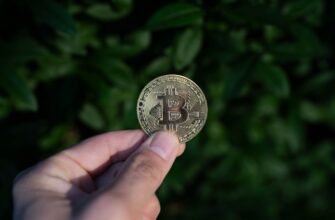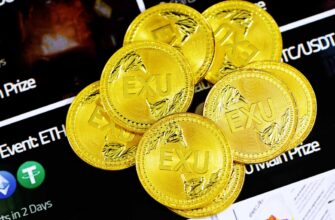The term “cryptocurrency circle” carries dual significance in the digital asset space. It refers both to the interconnected ecosystem of blockchain technologies and communities, and to Circle—a pioneering fintech company shaping the stablecoin landscape. This comprehensive guide explores both dimensions, examining how they converge to drive innovation in decentralized finance.
## What is the Cryptocurrency Circle Ecosystem?
The cryptocurrency circle represents the vast network of participants, technologies, and platforms enabling digital asset transactions. Unlike traditional finance, this ecosystem thrives on decentralization, peer-to-peer interactions, and transparent ledger systems. Key components include:
* Blockchain networks (Bitcoin, Ethereum, Solana)
* Exchanges (Coinbase, Binance, Kraken)
* Wallets (MetaMask, Ledger, Trust Wallet)
* Developers building dApps and protocols
* Miners/validators securing networks
* Investors and traders
* Regulatory bodies establishing frameworks
This interconnected web enables seamless value transfer globally, operating 24/7 without centralized intermediaries. Community engagement fuels innovation through forums like Reddit, Discord, and Twitter, where knowledge sharing shapes market trends.
## Circle: The Company Revolutionizing Digital Dollars
Founded in 2013, Circle Internet Financial has become synonymous with stablecoin innovation. Headquartered in Boston, the company developed USD Coin (USDC)—a regulated stablecoin pegged 1:1 to the U.S. dollar. Unlike volatile cryptocurrencies, USDC maintains price stability through:
1. Full reserve backing (cash and U.S. Treasuries)
2. Monthly attestations by independent auditors
3. Compliance with U.S. money transmission laws
Circle’s infrastructure supports over $30 billion in USDC circulation, facilitating instant settlements and cross-border transactions. Their product suite includes:
– Circle Account: Business treasury management
– Circle APIs: Developer tools for payments
– Web3 Services: Blockchain integration solutions
## Why Stablecoins Anchor the Crypto Ecosystem
Stablecoins like USDC serve as critical infrastructure within the cryptocurrency circle by:
* Reducing volatility exposure during trading
* Enabling efficient DeFi lending/borrowing
* Powering cross-border remittances
* Serving as “on-ramps” for traditional finance integration
Compared to algorithmic stablecoins, fiat-collateralized options like USDC offer enhanced stability through transparent reserves. Over 85% of Ethereum-based DeFi protocols utilize USDC for liquidity pools and yield farming.
## Engaging with the Cryptocurrency Circle
Participating in this dynamic ecosystem involves multiple entry points:
**For Beginners:**
– Use regulated exchanges to buy starter cryptocurrencies
– Join educational communities (e.g., CoinMarketCap Learn)
– Experiment with small stablecoin transfers
**For Developers:**
– Build on Circle’s programmable wallets
– Integrate USDC into payment systems
– Contribute to open-source blockchain projects
**For Enterprises:**
– Leverage Circle’s treasury management for crypto payments
– Tokenize real-world assets using blockchain
– Implement USDC for supplier settlements
## Challenges and Future Opportunities
Despite rapid growth, the cryptocurrency circle faces hurdles:
* Regulatory uncertainty across jurisdictions
* Security vulnerabilities in DeFi protocols
* Scalability limitations
Circle addresses these through initiatives like the Centre Consortium—a partnership with Coinbase establishing governance standards for USDC. Emerging opportunities include:
– CBDC (Central Bank Digital Currency) development
– Institutional adoption of tokenized assets
– Expansion of real-time global payment rails
## Cryptocurrency Circle FAQ
**Q: Is “cryptocurrency circle” the same as Circle company?**
A: Not exactly. The term broadly describes the crypto ecosystem, while Circle refers specifically to the fintech firm behind USDC. Both concepts intersect through stablecoin utility.
**Q: How does USDC differ from USDT?**
A: Both are dollar-pegged, but USDC emphasizes regulatory compliance and monthly audited reserves, while USDT’s issuer (Tether) has faced transparency controversies.
**Q: Can I earn interest with USDC?**
A: Yes—through DeFi platforms like Compound or Aave, users can lend USDC for yield. Circle also offers institutional yield products.
**Q: Is participating in the cryptocurrency circle risky?**
A: Like all investments, crypto carries volatility and security risks. Start with stablecoins for lower exposure and use hardware wallets for asset protection.
**Q: What’s Circle’s role in Web3?**
A: Circle provides foundational infrastructure through USDC—enabling decentralized apps, NFT marketplaces, and metaverse economies to transact in stable value.
## Final Thoughts
The cryptocurrency circle represents both a revolutionary financial ecosystem and the innovative entities like Circle that strengthen its foundations. As blockchain technology matures, the synergy between community-driven networks and regulated institutions will likely expand crypto’s real-world utility—making digital assets accessible for global payments, investments, and economic inclusion. Understanding this dual dynamic is key to navigating crypto’s evolving landscape.








